History
Built between the world wars
The Hr. Ms. O16 was commissioned in 1936, and shortly thereafter involved in a scientific research programme led by Vening Meinesz, who used the submarine to conduct gravity measurements in North American waters. That same year O16 carried a famous passenger, Prince Bernhard, husband of the Dutch Queen Juliana, when he took a short trip on board the vessel.
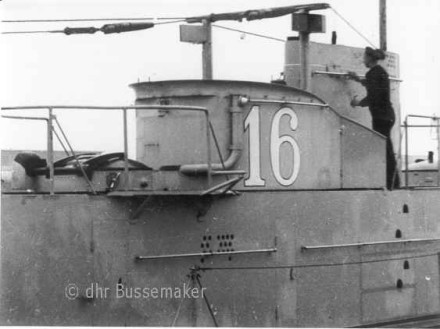
World War II
In 1939 the O16 was added to the submarine division of the former Dutch East Indies. In 1941 the ship was placed under British command with Singapore as its home port.
The first active combat seen by O16 and her crew followed the declaration of war on Japan by the Netherlands on December 7, 1941. The very next day, O 16 began attacking the Japanese forces invading North East Malaysia, and managed to damage several vessels and sink the troop ships Tozan Maru, Asosan Maru and Kinka Maru. After this successful campaign, she began to head for her home port of Singapore, where she had previously been stationed.
Mine field
In the night of December 15, 1941, the O16 struck a mine while sailing on the surface in the South China Sea . The submarine broke in half and sunk within a minute. All crew members that were below deck went down with the ship. The six crewmen that were in the cockpit ended up in the sea. Only one man survived, quartermaster Cornelis de Wolf, who reached the shore after 30 hours of swimming. He later reported on the disaster.
After the report of De Wolf was analysed, it was concluded that the submarine had entered a known British minefield and had struck a British mine. Thus the loss of the ship and the lives of 41 men seemed to be caused by a navigational error of commander Bussemaker.
Discovery
In 1995, Sten Sjöstrand, a former shipbuilder and highly experienced shipwreck researcher living in Singapore investigated a shipwreck 34 km northeast of Tioman Island. The wreck turned out to be a badly damaged submarine, and, knowing the history of O16, he contacted a Dutch journalist who put him through to the Royal Netherlands Navy. The Navy, which had been looking for the wreck site of O16 for many years, quickly sent a group of investigators, including retired navy officers Hans Besçon, who had personally located his father's ship, the Hr. Ms. KXVII.
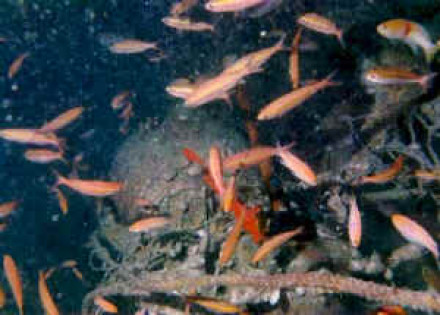
The commander rehabilitated
The wreck was found lying at a depth of 53 meters. Despite the difficult diving conditions, the net cutters and two retractable A-A guns typical of the O16 were found at the site two days after the start of the operation, and the layout of the bridge visually corresponded to the construction drawings of the Dutch submarine. So the wreck site of the O16 was officially identified, some 70 km north of her assumed position.
Part of a History Channel documentary that also tells the story of the Hr. Ms. O16.
The news of the O16's final position turned out to be quite important, and, combined with Japanese information revealed that a chain of mines had been placed north of the British minefield, exonerating the captain of the O16. Some 50 years after his death, the world finally knows that he truly held no fault in the loss of his men and his ship.
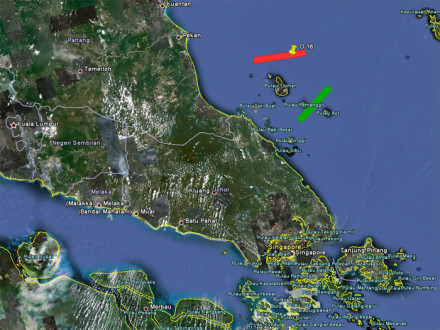
Description
Yard: Koninklijke Maatschappij de Schelde, Flushing
Yard number: 200
Engines: 2x 8 cylinder MAN diesel, 1x 460 hp electric
Armament
8 x 53 cm torpedoes
1 x 8.8 cm cannon
2 x 40 mm anti-aircraft
The Hr.Ms. O16 was a unique member of the Royal Netherlands Navy, as the only submarine belonging to the O16 class. She was laid down on 28 December 1933 and launched on 27 January 1936. She was commissioned on 26 October 1936.
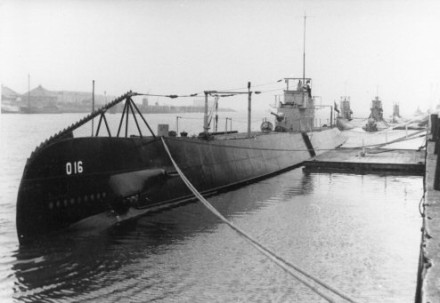
| Master | Bussemaker, Antonie Jacobus |
|---|---|
| People on board | 42 |
| Power | 1600 hp |
| Speed | 18 knots ~ 21 mph (33 km/h) |
| Speed submerged | 9 knots ~ 10 mph (17 km/h) |
| Length | 251 feet (76.5 m) |
| Width | 21 ¾ feet (6.6 m) |
| Draft | 13 feet (4 m) |
| Displacement | 984 ton |
| Displacement submerged | 1194 ton |
Status
Memorial
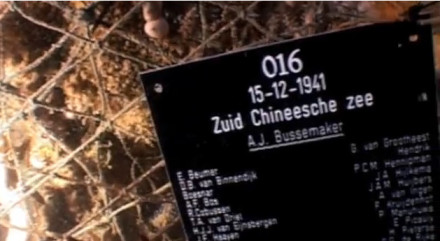
After the Hr. Ms. O16 had been positively identified, a short ceremony was conducted 53 meters above the site. The sons of the commander of the O16, Henk and Ton Bussemaker, cast a wreath of flowers into the sea in the name of the families of the deceased. A plaquette with the names of the deceased was also placed on the wreck.
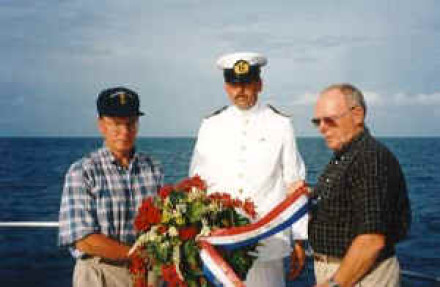
Stories about salvage
Until recently, the wreck of the O16 was largely preserved in situ. In October 2013, disturbing news about the wreck of O16 came from Malaysia. At the location of the final resting place of the O16, along with the 41 sailors that sunk with her, an Indonesian crane ship was sighted carrying a load of rusty scrap metal. Whether the war grave has been the victim of illegal commercial salvage remains unclear.
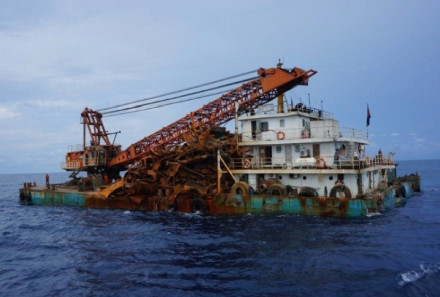
Research by the RCE
This type of reports caused the Cultural Heritage Agency of the Netherlands (RCE) to start an investigation into the Hr. Ms. O16 and KXVII in 2019, together with the Royal Netherlands Navy and the Malaysian authorities. The thing that was feared, turned out to be the truth. The sites had been stripped and the wrecks had disappeared except for a few remains.
The iron of these ships is valuable and sought after. It has an unusual composition since it was produced before nuclear weapons had been detonated in the atmosphere from 1945 onward. Because of this, the iron was not exposed to radioactivity during its production and has a very low background radiation. Due to this it is very useful for producing certain types of sensitive equipment for instance.
These illegal salvages have destroyed two war graves. Because of this, the Dutch and Malaysian authorities made agreements concerning better protection and the RCE conducted another investigation there into the wrecks of the Hr. Ms. O20 and KXVI. The expectation was that both ships would have been plundered. This was the case with the KXVI but the wreck of the O20 turned out to still be in its place.
A Dutch documentary on the finding of the Hr. MS. O16.
References
- Comité Nabestaanden onderzeeboten 1940-1945.
- Wilco Vermeer.
Traces of War. - Site Dutch Submarines A.P. Bussemaker - Locating the wreck of O-16.
- Alle Hens.
De tegenaanval. - RCE.
Nederland en Maleisië zetten stappen in samenwerking oorlogswrakken. - RCE.
Onderzoek naar gezonken Nederlandse onderzeeboten in Maleisische wateren. - SNO.
O16.